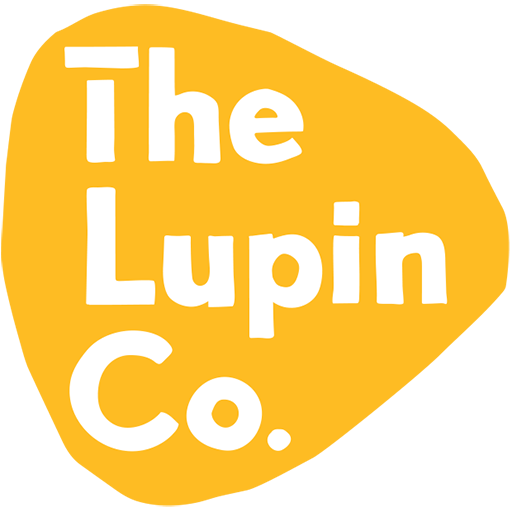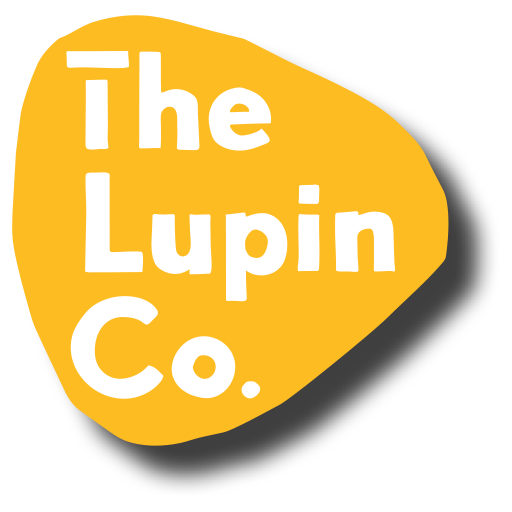Health
Making Lupin flakes – Naturally
Hi Lupin-lovers – It is not unusual to receive 2-3 requests weekly from our many friends asking us how we make our Lupin flakes.
Is it a natural product? Do we use liquids? Do we boil the beans? Do we heat the final product? How do we make these amazing little gems? So, we thought that it was time to share our process and you can all understand just how we go making lupin flakes and lupin flour.

We have a very natural bespoke process, with no additives, no roasting, no preservatives and all completed in our Australian factory. Our first step is to harvest the beans in dedicated Australian Sweet Lupin bean paddocks. These are usually 1,000 acres with laser straight rows (from our GPS controlled equipment) of beautiful lupin plants. We harvest these beans at the start of harvest to ensure that our equipment is squeaky clean and free of any other grains or oilseeds – assurances that our programmed order of harvest keeps gluten from entering the supply chain of the lupin beans. Our beans are all ‘single origin’ and come from the same farms – ours.

Once the lupin plant is harvested, we store the beans in silos before the next step – to process them through mechanical ‘sizing’ equipment to ensure the bean size is uniform at least 4.5mm in diameter. We remove any remnant lupin plant pods and other plant material – stalks and leaf material left over. This helps our factory process which is the next stage – to minimise any losses and improve efficiencies when we are making lupin flakes and lupin flour. We size the beans very accurately to ensure we are harvesting only the very best and largest beans. The sizing equipment is simply a collection of cylindrical drums which rotate at different speeds and at different angles, with varied air speeds to help with the removal of non-lupin material – pods, perhaps a grasshopper and stalk-like materials – this is called ‘aspiration’.
Once the beans are sized and cleaned, we store them in silos dedicated to lupin-only storage – no other material has been stored in these silo’s, only our lupin beans. This commitment to single product use helps to ensure against any cross contamination with gluten or other products. Our silos are fully sealed, which means we seal the bottom and top hatches with specially designed mechanical systems.
We also use a special air vent to allow for pressure changes inside the bin because of hot, cold & mild temperatures. These temperature changes cause expansion and contraction of air inside the silos and we want to keep the silos from collapsing – a bit like a plastic bottle left in the sun, which will eventually pop/explode if left unattended. Keeping our silos in pristine condition is very important to us so our specially designed valves allow for air pressure transfer, yet do not allow for any pests to enter – we call this an air-lock valve. Interestingly, the intergranular space between each lupin bean is so great that the better than average convection currents/flow of air throughout the silo helps in a major way to with shelf-life stability of the beans – preserves the quality immensely.

When we transport our lupin beans from the farm to the factory, we use very large trucks in loads usually weighing approx. 65,000kg. These trucks are dedicated grain trucks with the containers washed before we use them – another small step to removing any potential traces of other grains or oilseeds. When the truck arrives at the factory, we double check the quality, empty the truck into our silos and the next stage of the process starts – making lupin flakes and lupin flour.
The time to turn these little beans into flakes arrives and the first step is to prepare the factory for processing. That involves checking flow paths to make sure everything is ready to start.

Once we are ready to start, the milling equipment is started, and the beans are elevated into the first part of the milling. This step very carefully removes the outer shell or husk of the bean, without damaging the beautiful lupin cotyledon which eventually becomes our lupin flake and lupin flour. The cotyledon exits the first machine looking like a split pea, just like the split pea you use for soups. You may know that lupin is a pea/legume, and this is how most peas look once the shell is removed. We call these lupin splits. The husk which has now been removed is then swept away with a strong flow of air and we call this step aspiration. The husk is aspirated to another bin and kept very separate from the rest of the factory products.

As soon as the lupin split exits the first stage, it is then elevated into a colour sorter which uses many fixed cameras to analyse every single bean for colour defects – we can colour-inspect down to the size of a grain of salt. Some lupin beans do mature slower than others and retain a green colour – we remove these just to keep the yellow colour consistent. The green discoloured lupin splits are removed and are not included in any further processing.

After the colour sorter step, the lupin splits are elevated into the second part of the process and that includes a very sophisticated mechanical size reducing process. We gently reduce the lupin split in a series of steps to a size which makes a lupin flake – not too large and not too small. When we make flour, this step is not so important but for lupin flakes, our customers like to see consistency with the flake.

The size reducing steps involve a lot of specially designed wheels and drums, turning very slowly at ambient/local air temperatures so as not to disrupt any of the protein quality. We start from around about a lupin split (5-7mm diameter) and then gradually reduce the size of these chips or kibble, to about 2 mm wide and 3mm across. The final process involves transporting the kibble to some very large and heavy rollers designed to pinch the kibble pieces – all in a dry process – no water – no extra heat – no roasting.
Finally, the very special flakes appear from the bottom of the rollers ready for packing to one of our products or for further processing into flour…and that is another process we can explain later. So, there you have it. Our process is all about maintaining beautiful round clean single -origin lupin beans in the best condition. We use a dry mechanical process to produce these beautiful Lupin Flake’s without any damage – it’s as if they came straight from the paddock.
We hope the explanation helps many of the questions you might have had, but if you need to know more, drop us a line and we’d love to share more about how we make our lupin flakes and lupin flour – naturally.
David, Chief Lupinologist, The Lupin Co – Australia
January 2021

